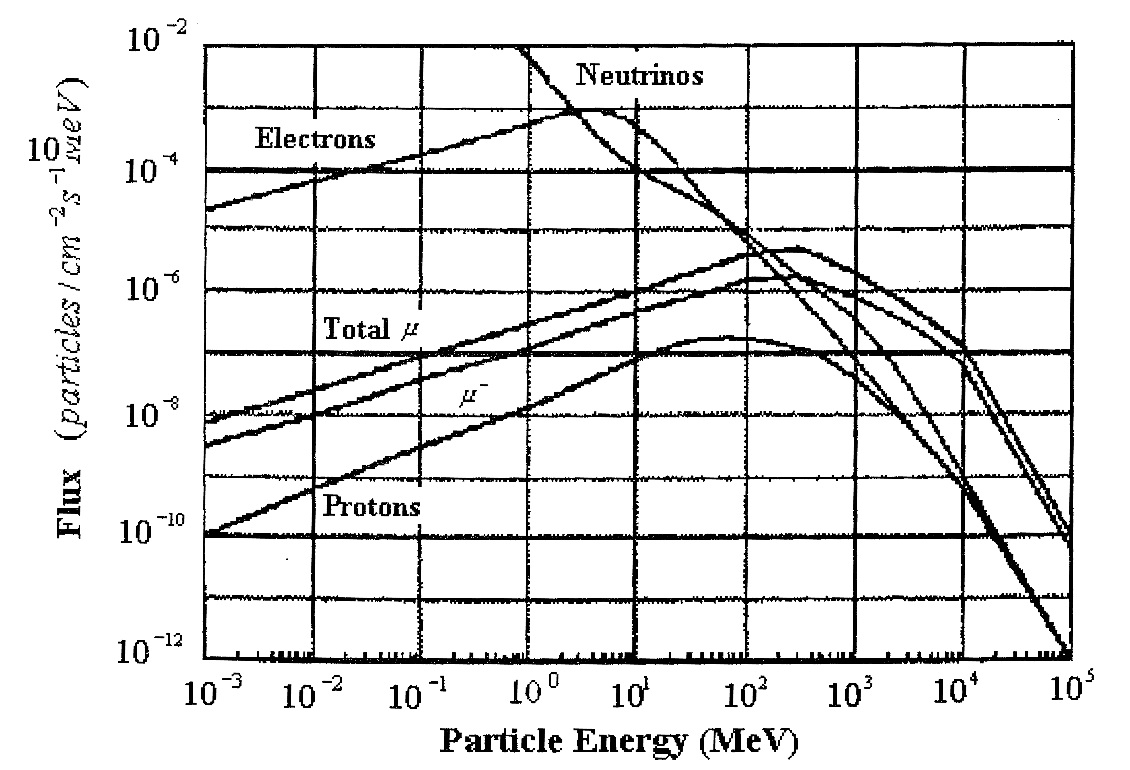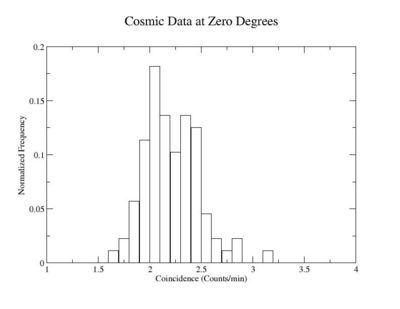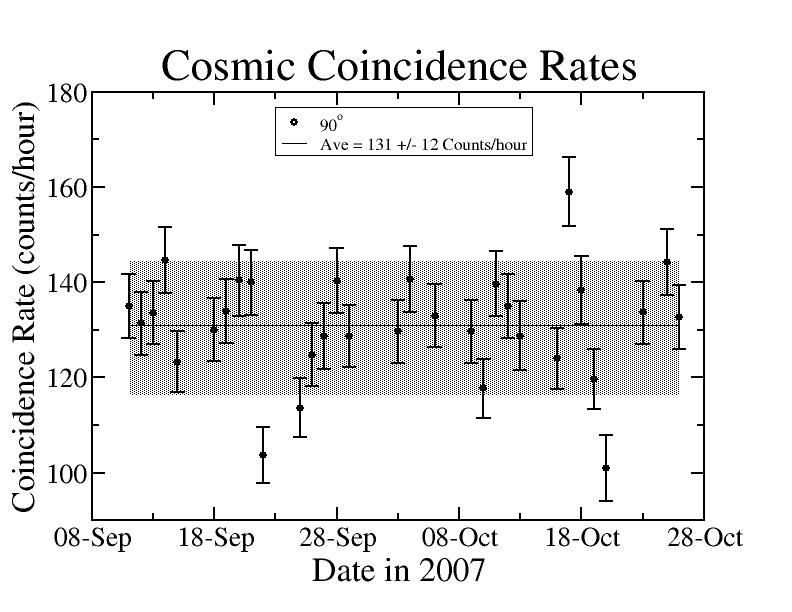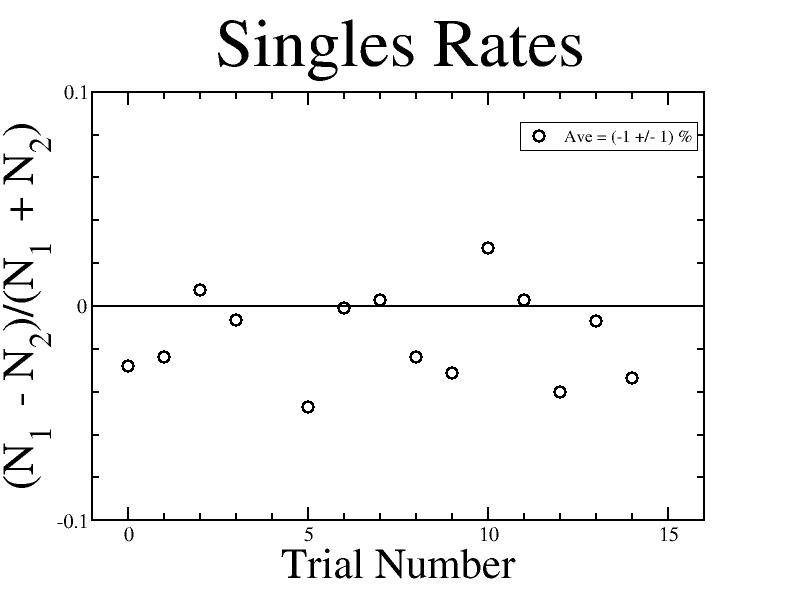Cosmic Telescope
What is a Cosmic Ray
Cosmic rays are particles originating outside the earth which hit the Earth's atmosphere. Cosmic rays are made up of all the elements in the periodic table. 89% of the particles are protons, 10% are alpha particles (a helium atom without its electrons), and 1% are heavier elements.
Galactic and Solar
The term cosmic rays usually refers to Galactic cosmic rays that are further divided into two categories; either galactic or extragalactic. Galactic cosmic rays are all particles which enter our solar system from outside. Extragalactic cosmic rays flow into our galaxy having energies beyond 10e15 eV (amount of energy your body creates in 1/1000 of a second). They are very rare with only 1 entering a square meter on the earth's surface per year.
Solar cosmic rays originate from the sun and have energies between 10 to 100 kilo-electron volts (keV = 1.6 e-16 Joules = amount of heat your body produces in 1e-18 seconds [1/1000 femto-seconds]).
Primary and Secondary cosmic rays
Primary cosmic rays are galactic cosmic rays which can interact with stellar matter and the Earth's atmosphere. The interaction of the primary cosmic rays with the Earth's atmosphere produce secondary cosmic rays. The secondary particles produced are pions, muons, gamma rays, neutrinos, and neutrons.
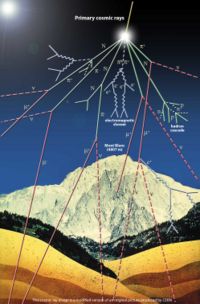
The flux of cosmic ray particles as a function of their energy. The flux for the lowest energies (yellow zone) are mainly attributed to solar cosmic rays, intermediate energies (blue) to galactic cosmic rays, and highest energies (purple) to extragalactic cosmic rays.( S. Swordy, The energy spectra and anisotropies of cosmic rays, 2001, Space Science Reviews 99, pp85–94)
At sea level, cosmic rays are mostly composed of MeV energy electrons and 100 MeV energy muons. The proton flux is more than 10,000 times smaller than the electron flux.(J. Ziegle, NIM, vol 191, (1981), 419
File:CosmicFluxVsEnergySeaLevel.jpg
Oh-My-God- Cosmic rays
About 15 protons having an energy of 10e20 eV have been seen by the University of Utah's Fly's Eye Cosmic Ray Detector. ( the first publication Physical Review Letters, 22 November 1993, http://arxiv.org/abs/astro-ph/9410069)
Particles of this energy could light up a 40 Watt light bulb for a whole second.
At a January 12, 2005 conference of the American Astronomical Society, particle physicist Glennys Farrar presented a paper tracing five similar very-high-energy cosmic rays, all of which were detected between 1993 and 2003, to a pair of colliding galaxy clusters 450 million light-years from Earth. Farrar speculated that the clusters' powerful magnetic fields could become warped in the collision, accelerating charged particles to the extreme energies astronomers have observed.
In June 20,2006, the NSF provided $2.4 million to upgrade the "telescope" by relocating it to a larger area and install more scintillators designed to improve is cosmic ray detection sensitivity an order of magnitude. The "telescope" will be composed of a ground array of 564 table-shaped scintillation detectors, each about 3 feet tall and 6-by-10-feet wide. The scintillation detectors will be spread in a grid over an 18-mile-by-22-mile area west of Delta. The BLM right-of-way grant/temporary use permit will allow scientists to build the central laser facility and install 460 of the scintillation detectors on BLM land, which covers 80 percent of the observatory site.
[edit]
How are Cosmic Rays created
It is currently believed that Galactic cosmic rays are the result of supernova explosions which happen about once every 50 years in our galaxy. Galactic cosmic rays spend about 10 million years roaming the galaxy due to the magnetic fields of stellar objects before they leave the galazy into intergallactic space becoming extragalactic cosmic rays for planets outside our galaxy.
Apparatus
The Cosmic Telescope is a simple yet complex piece of equipment. It consists of Scintillators with PMTs connected to them. These Scintillators are held 2cm apart by being fit into a long piece of PVC pipe. This pipe is connected to a sturdy base of wood and is able tilt where it meets the wood thus providing us with the ability to measure angular distributions. High Voltage Units are plugged into each Scintillator which both have a cord connecting them to a Quad Linear Fan In-Fan Out module contained in the Nim bin. From here they are connected to a Quad Discriminator. This is where the Threshold of 225mV is kept constant. From this unit the top scintillator is plugged into a Singles Counter. Also, both scintillators run from the discriminator to a Logic Unit. The logic unit looks for the coincidences and when one is found, a signal is sent into a Constant Franction Disc. This unit makes the signal readable for the Coincidence Counter.
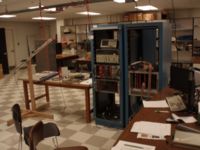
Starting on Nov. 1, a new system of counting coincidence counters began. In this system, cables are connected to a computer, two from the Quad Discriminator and one from the Logic Unit. The two from the Discriminator input sigles counts from the two scintillators and the one from the Logic Unit inputs the Coincidence Counts. The computer records all three numbers using a Minicom application. At the moment, a new program is being developed by Dr. Forest that will control all the data taking process from the computer.
Calibration of Apparatus
Each paddle is 4cm by 2cm and set at 2.5cm apart. The conclusion from these studies shows that the most efficient threshold for the paddles would be at 225mV. We had to map out the tendencies for these paddles because we were unsure of how they worked, that is, we didn't know where the best opperating ranges were. This information is vital if we are to argue that the data we are gathering is actually what we are looking for.
===Data of Paddle Thresholding ===
On October 30 and 31, we started using a new system of counting using the computer. The computer is able to collect singles data from both scintillators including coincidence. After a few trial runs, it was discovered that the scintillators were measuring completely different singles counts by about a factor of 2. In an effort to get the single counts closer, the High Voltage on the bottom scintillator was raised by 30 Volts. Now the scintillators are measuring roughly the same amount of singles but with it, the coincidence rates have increased. All the data from November 1st on will have higher rates because of this increase.
Summary
| Angle | Coincicend Rate (Coutns/hour) |
| 0 | |
| 15 | |
| 30 | |
| 45 | |
| 60 | |
| 75 | |
| 90 |
Graphs
Taking points at zero degrees leaves a lot of data to be understood. This is best done through a graph. This is a histogram of all the points taken at Zero degree from 8/24 to 10/24. This histogram is comprised of 88 points.
A strip chart of the coincidence rates when the paddles are oriented to detect cosmic rays that are perpendicular to the earth's surface is shown below. The shaded region represents one standard deviation (1 =14.1 Counts/hour) from the average counting rate. The uncertainties are statistical. The smallest uncertainties were the result of data collected over a period of 3 hours, the largest for 30 minutes.
This is the relationship between the top and bottom scintillators. These points were taken with the singles counts on both scintillators. This was achieved with the help of the new computer program. The equation used to find these points is:
Cosmic Telescope Logbook
The logbook contains tables of all data taken according to the date.
